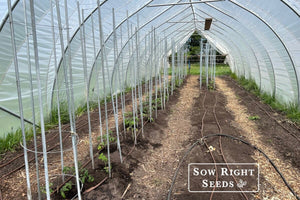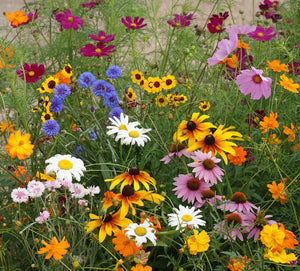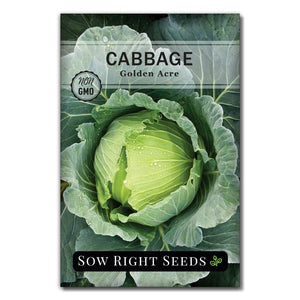How to Use 10 Design Elements for a Beautiful Vegetable Garden
Garden designMy first gardens were strictly utilitarian. They were designed like my grandmother’s, with straight rows and distinct varieties in each row. However, over the years, I’ve seen many ways to create productive and beautiful gardens. Usually, these designed gardens are in locations with small lots, and it takes some creativity to cram in all the things you want to grow.

So, how do you create a beautiful and functional vegetable garden? By incorporating the essential elements of design, you can create a visually appealing garden full of vegetables, flowers, and herbs.
If you live in an area where the HOA might question your aesthetics, there is a way to design a vegetable garden that the neighbors will envy, not only for the juicy tomatoes but also for the beautiful layout.
These 10 elements of garden design can help you create a vegetable and herb garden that you will love spending time in. A garden you love will be well-tended and productive.

Designing a Garden Layout for Vegetables and Herbs
Unity and Harmony
Unity and harmony in garden design are not as lofty as they may sound. Think of it as blending in with the neighborhood in a good way. If your neighborhood has a lot of brick and stone, use these same materials to line your vegetable garden and give it a harmonious feel.
Use complementary textures and colors as much as possible. Your vegetable and herb gardens don’t have to be as formal as your neighborhood's, but using textures and colors that complement each other will make them feel more cohesive.
If your flower beds in front have stone, carry that material through to the backyard vegetable garden. Use the same edging - wood throughout or stone.

Balance
There’s a reason that vegetable garden beds can often be awkward and stand out in a bad way. Without a design plan, there may be one lonely square garden bed on a green lawn.
Instead of one raised bed, have two or three, giving the overall landscape a feeling of balance.
Having all your vegetation in one area without anything to balance on the other side will also throw off your design. This doesn’t mean both sides have to match exactly, but they’ll have a flow or even distribution of garden space.

Focal Points
Part of a beautiful garden design is having a focal point. And no, one lonely wooden box is not a focal point. A trellis is a very effective and useful focal point for a vegetable garden. Butternut squash, pole beans, and luffa are excellent focal trellis options. To work with the element of balance, you can have a focal point in the center of two garden beds or an arch that connects the two.
A decorative bench can be a focal point and a favorite spot to sit and enjoy the beautiful and productive space you’ve created.

Proportion and Scale
Proportion and scale are another reason why the little 4x4 box in my acre backyard was not working. The size was too small for the space. You can liken it to a 4x6 print on a large interior wall; the scale doesn’t work.
To get the proportion right in a small area, consider how large the plants will get and if they will overwhelm the space. Several smaller beds with wide paths can create a fuller space in larger spaces.
A beautiful garden design considers the whole landscape and determines how it all fits together. One pepper plant by itself is lonely but placed in a flower bed; it looks beautiful.

Color
You might not think of color in a vegetable garden, but there are many shades of green as well as blossoms for developing fruit. Plants like okra and peppers are excellent for adding color to your garden.
Adding flowers to your garden can increase its color palette. This is a beautiful and smart design move. The bright blossoms will attract bees and butterflies and help pollinate your vegetables. Planting flowers in groups can give your garden a splash of color and a focal point.

Line and Movement
Creating a visual line gives the eye a place to travel. Edging on garden borders and pathways creates lines.
Pathways in a vegetable garden can create a sense of movement and be very functional. They can curve around to draw the focus to another location or connect two spaces.
Consider the materials to maintain a harmonious design. Create a beautiful and functional path through your garden with enough space for a wheelbarrow.

Texture
There’s naturally a lot of texture in a vegetable and herb garden. You can plan for frilly foliage with dill and asparagus.
Leeks have a beautiful fan shape and a much different texture than carrots. However, they can be grown together to create a nice mix of textures.
Different textures can be intermixed or planted in groups for a more formal garden design.

Form
Form in a vegetable garden can refer to size and growth habits. In cages, tomato plants can be tall, while bok choy is tight and low. Ornamental kale can be used in all kinds of gardens.
A well-designed garden will have some variation in form.

Functionality
Functionality is crucial in vegetable garden design. You have to be able to reach across beds for weeding and harvesting. You need watering systems that get water where it needs to be. Pathways need to be wide enough for walking through. Compost bins and a storage shed can be incorporated into your functional garden design.

Sustainability
Sustainability in a vegetable garden is important for the natural environment and sustaining the effort to maintain it. A drip irrigation system helps conserve water and makes your garden easier to maintain. Planting cover crops and rotating crops annually will help maintain soil health and reduce pests. Using native and heirloom plants will improve the local ecosystem.

A Few Garden Design Tips I've learned from Experience:
- Raised beds offer a way to create balance and focal points and keep things cohesive.
- I learned the hard way that I needed to leave enough room between the beds to fit a wheelbarrow. The taller the beds, the more important that width is.
- Paths clearly defined with edging or materials make it visually pleasing and easy to walk through your garden.
- The plants lining your path don’t have to be exotic tropicals. For example, the fan-shaped leaves of leeks can add beauty and an edible function.
- Start with a good foundation. Those stepping stones will disappear if not placed on a solid foundation. Use sand and gravel.
- Barriers can be part of the overall design. Consider deer, rabbits, moles, and other animals that must stay out of your garden. To prevent pests from burrowing, place chicken wire or something similar on the bottom of beds.
- Use quality so it doesn’t fall apart when your harvest is going full steam.
- Plant taller plants on the north so they don’t shade smaller plants
- Having a design helps me know that I really can’t fit 12 tomato plants in one bed.
- A good garden design allows for succession planting.
- Claim your space and make it look intentional.

By applying these ten garden design principles, you can create a vegetable garden that is both visually stunning and highly functional. A thoughtfully designed garden not only enhances your outdoor space but also makes it a more enjoyable and productive place to spend time.
A well-planned vegetable garden isn’t just about aesthetics or keeping the HOA happy—it’s about creating a space you’ll truly love and appreciate.







Leave a comment